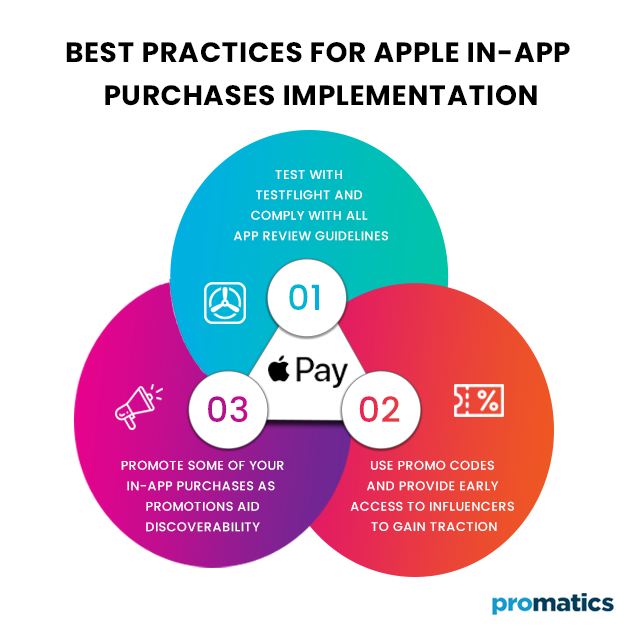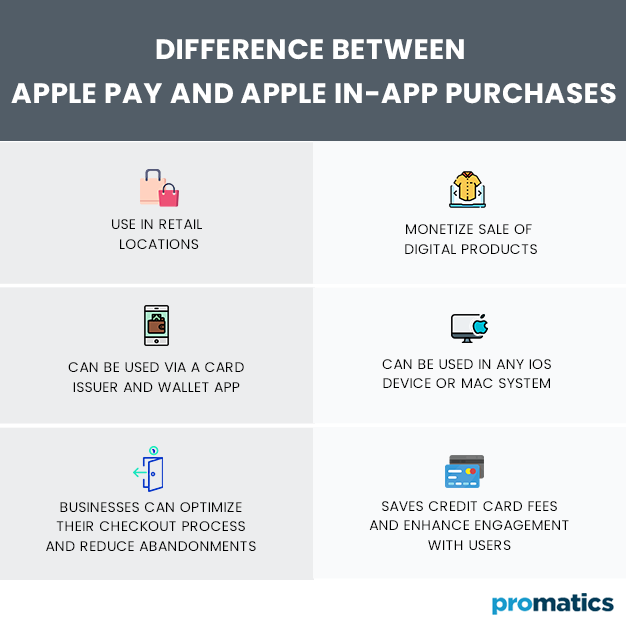Apple In-app Purchase Program Guide for Dummies
What is the Apple In-app Purchase Program?
In a quest to gain a significant competitive edge on the iOS app store, iOS developers try to push extra content and features, for example, premium content, subscriptions and digital goods using in-app purchases. Apple also allows app businesses to promote and offer in-app purchases directly on the app store.
Apple’s in-app purchase program can help app owners sell a variety of content like subscriptions, new features and services on iOS, iPadOS, macOS, watchOS, and tvOS.
Type of In-App Purchases
I. Consumable
These types of in-app purchases are often depletable and require frequent repurchasing. For example, the lives or gems in games that extend the playing span of a player on iOS gaming apps are consumable in-app purchases.
II. Non-consumable
Non-consumable in-app purchases are premium features that are non-deletable, i.e. they do not expire once purchased. For example, users who buy additional filters in photo apps make a one time purchase of these non-consumable features. Apple, however, reserves its right to host content associated with such non-consumable in-app purchases.
III. Auto-Renewable Subscriptions
These in-app purchases provide iOS users with access to services or periodically updated content for a fixed sum that is charged repeatedly until the user decides otherwise. For example, monthly entry to cloud storage or fortnightly subscription to a magazine is auto-renewable subscriptions.
IV. Non-Renewing Subscriptions
This type of in-app purchases allows users access to services for a limited duration of time and do not renew automatically. A user has to continue each time they exhaust their subscription. For example, a season pass to content streaming apps in a type of non-renewing subscription.
How to Prepare to Benefit from Apple’s In-App Purchases?
If a business intends to offer in-app purchases, they must sign the Paid-Applications Agreement syncing in their bank and tax information.
a.) App developers must use the Xcode configurations to enable in-app purchase services for their app.
b.) Next, they can configure their in-app purchases in the App Store Connect to include details like name, pricing and descriptions. These details often highlight the features and functionality of an in-app purchase, and rightly so. It is relatively easy to create and maintain in-app purchases using XML.
c.) Businesses must focus on designing an in-app purchase UI that resonates with the feel of the existing app and showcases it in the best light.
d.) The StoreKit Framework can then be used to embed the in‑app purchase into the app and securely process purchases of content and services.
e.) They can also use the receipt validation code to protect the content and prevent unauthorized purchases.
f.) An app business often comes across App Store server notifications that concern refunds for in-app purchases. It can use this information to take action in response after letting the user know of any changes.
g.) The Apple sandbox testing environment helps test in‑app purchases without incurring charges.
h.) iPhone app developers also count on TestFlight to gain valuable feedback on the in‑app purchases from a wider audience before releasing the app on the App Store. As all the in‑app purchases are free during the beta testing period, it makes it easier to test them thoroughly.
Publishing Best Practices: Apple’s In-App Purchases
The publishing process for in-app purchases is relatively simple too.
A.) After testing the in-app purchase with Apple TestFlight, verify that it complies with the App Review guidelines and the prescribed implementation checklist before you submit it using App Store Connect.
B.) A business owner can promote up to 20 in-app purchases on its product page, at any given time—promotions aid discoverability for the content already published on an iOS app. At the same time, users can browse the in-app purchases through the iOS store directly, without any need to download the app first.
C.) Following the latest trends, app businesses can gain traction with the help of press kits and influencers early access to in-app purchases through specially drafted promo codes from App Store Connect. Apple allows companies to give away up to 100 promo codes for each in-app purchase item, i.e. up to a 1000 codes per app.
Role of In-App Purchases Play in App Store Optimization
Right from the time, Apple released iOS 11, app store optimization is all about in-app purchases. The in-app purchases can surface on the app store listing, amidst search results or may be featured in the apps tab. If an in-app purchase pops up in the search results of the app store, the users are directed to the actual app to finish the purchase process without any need to install it. However, all this requires the rigorous promotion of in-app purchases.
While an iOS app can have an unlimited number of in-app purchases, only 20 can be promoted at any given point in time. Promotions require a promotional image that is hosted on these spots. For places outside the app page, Apple adds the app icon with the promotional image automatically.
Optimizing the app page makes it discoverable. Optimizing the in-app purchases means having the app in addition to 20 in-app purchases to add to the visibility of your business on the app store. This increases the chances of it showing up the search results. In-app purchases also provide more opportunities to dominate relevant keyword search phrases. If the in-app purchase shows up in App Store search results, it takes another spot underneath your app.
Difference Between In-App Purchase Program and Apple Pay
With the increase in mobile phone penetration over the recent years, there is a need to brush up mechanisms for mobile payments to meet the needs of a fast-evolving customer base. Features like a smooth checkout process and ease of use are the need of the hour if app owners wish to monetize their apps without increasing abandonment rates.
In-app purchase program and Apple Pay are two most common ways to allow purchases on an iOS app. However, both of these options are drastically different from each other and must be used only under specific conditions.
Apple Pay
Apple’s Apple pay is an intuitive m-payment solution that allows users to make convenient payments online in supported apps as well as at retail locations through credit cards that can be safely secured on the iOS device in the Wallet app. The prerequisite here is a participating card issuer. When a card is registered, the Wallet app is supposed to reach out to the card issuer through the network and request a digital payment card number that is unique to a customer’s device. Apple stores the device-specific number and payment token is stored on the device securely and protects it with multiple layers of security. So, whenever the customer decides to use the tool to make a payment, they are required to authenticate with their fingerprints using Touch ID or Face ID. Apple Pay works best for physical products like groceries, clothing and appliances. Service-oriented businesses, for example, ones that make reservations and memberships, can also optimize their business with Apple Pay.
Since Apple Pay is free with the essential requirement of credit card fees that applies, customers love it because it allows them to make purchases without any need of sharing additional information. It helps businesses optimize their checkout process and reduce abandonments. Use of the highly secure device account number to process the transaction reduces any chances of credit card details being stolen. iOS developers find Apple pay easy to integrate as every Apple device supports it.
In-app Purchase
iOS app businesses find it hard to sustain profitably given the numerous free equivalents they have on the iOS app store. The In-app purchase program by Apple is the perfect way by which app businesses can offer their apps for free use and still monetize their business profitably. It’s best to use in-app purchases to monetize the sale of digital products. Added content, features and subscriptions are some of the digital products that a user can buy in the iOS device or macOS computer.
In-app purchases incur no credit card fee and enhance the engagement with users. Overall, they serve as a great experience and add distinct value without letting the user leave the app.
In the End
iOS apps bring a wide array of choices for developers to play with to monetize an app. In-app purchases allow businesses the convenience to charge users for specific functionalities or content as they use the app.
We at Promatics are an experienced iOS development company. Our team of skilled iOS developers like in-app purchases as they provide the business with an extra income stream. Integrating in-app purchases allows enterprises to launch a free app on the storefront and still make revenue out of it. Our team often makes the free iOS app version to feature a lot of advertisements which can again be done away with in-app purchases. We specialize in basic Swift and iOS programming concepts and have experience of developing hit in-app purchases with access to both the iOS Developer Center and App Store Connect.
Still have your concerns?
Your concerns are legit, and we know how to deal with them. Hook us up for a discussion, no strings attached, and we will show how we can add value to your operations!



